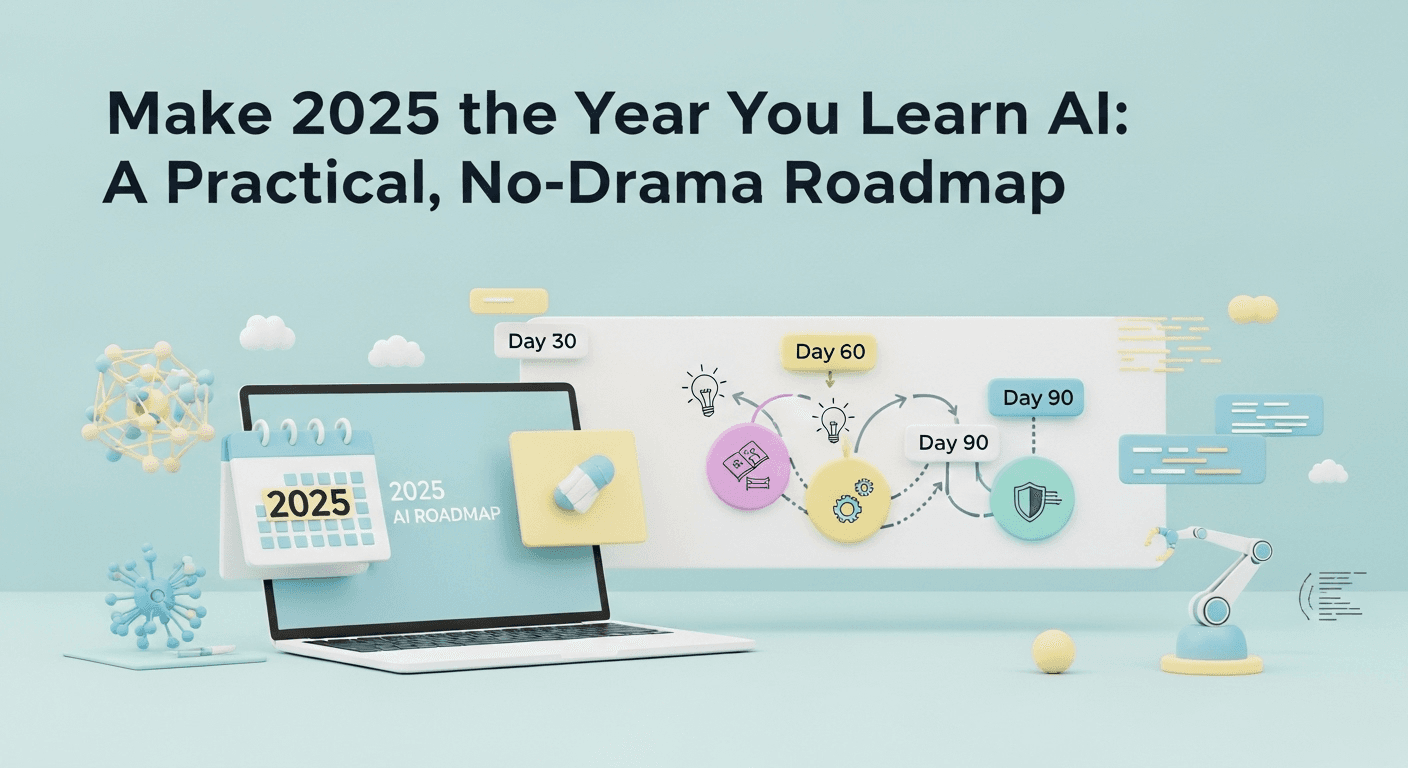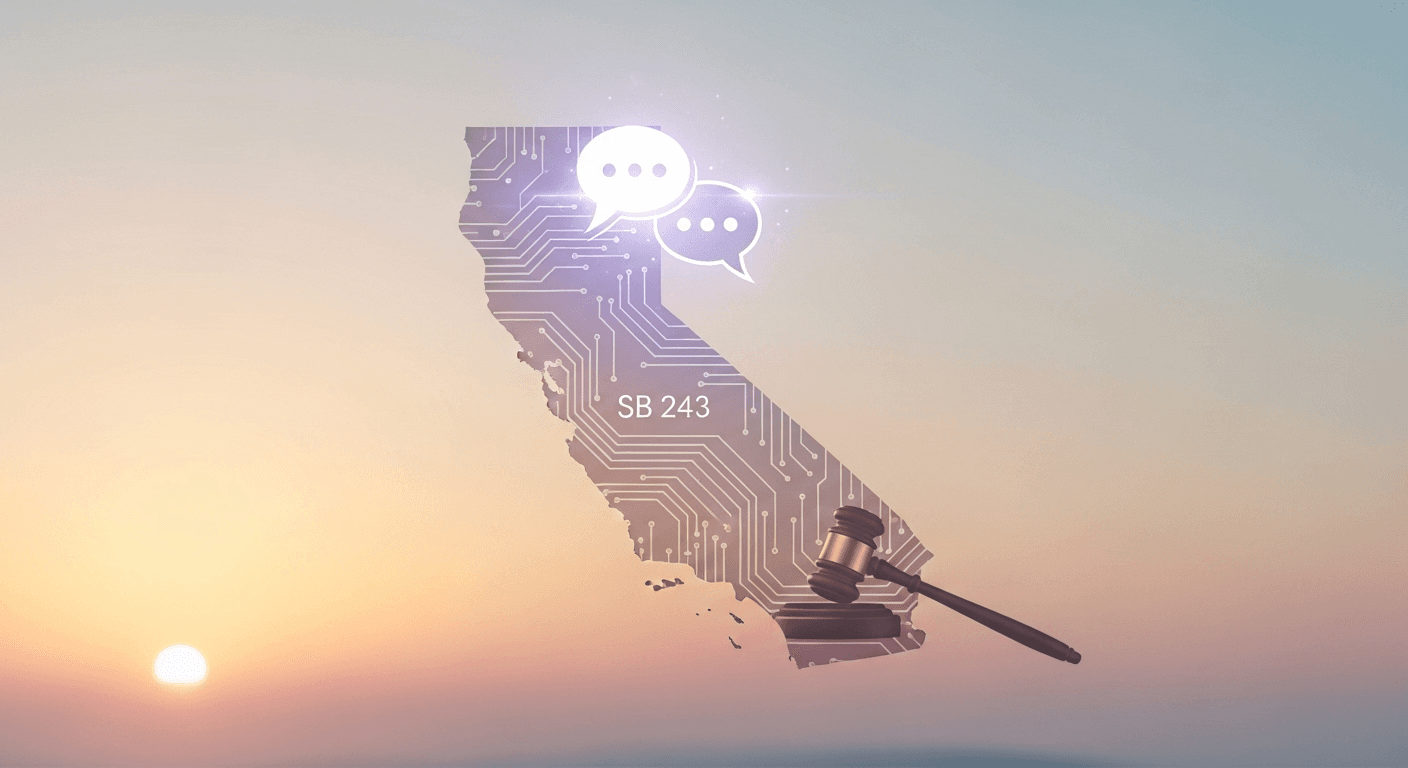Make 2025 the Year You Learn AI: A Practical, No-Drama Roadmap

Make 2025 the Year You Learn AI: A Practical, No-Drama Roadmap
Artificial intelligence (AI) has evolved from a buzzword into a fundamental part of how we work. From writing to analysis, coding, operations, and decision-making, AI is reshaping the landscape. If you’ve been curious about AI but unsure where to start, 2025 is the time to dive in. With mature tools, numerous high-quality learning resources available, and a labor market increasingly favoring AI literacy, now is the perfect moment to commit to your AI journey.
This guide offers a straightforward, step-by-step plan to achieve tangible results in just 90 days. You’ll find project ideas, time-saving tips, and important guidance on ethics and regulations. You don’t need to be a data scientist, just a curious mind, a few hours a week, and the drive to create useful projects.
Why Now is the Best Time to Learn AI
- Labor Market Demand: Companies globally are adapting their operations around AI, leading to a surge in demand for professionals with AI and big data skills. The World Economic Forum predicts the creation of 78 million new jobs by 2030 as roles evolve, with employers increasingly focusing on upskilling.
- Wage Premiums: Roles requiring AI skills come with notable pay increases. Recent analyses show wage premiums can reach up to 25% in some markets, with an average increase of 56% globally in recent job postings.
- Effective Tools: Research indicates that AI coding assistants can enhance development speed and code quality, enabling workers to regain time in their routine tasks when used correctly.
- Clearer Regulations: The EU’s phased rollout of the AI Act clarifies expectations around transparency and AI literacy. These emerging standards are influencing global practices and can guide your learning journey.
- Trust in AI Tools: Adoption rates are rising, although trust in AI outputs is still in development. Individuals who learn to leverage AI tools effectively will have a competitive edge.
Who Should Follow This Guide?
- Professionals Seeking AI Application: Those who want to harness AI in their fields without needing to be full-time data scientists.
- Analysts and Operations Experts: Those looking to automate mundane tasks and focus on strategic initiatives.
- Developers: Professionals eager to integrate AI for improved efficiency and impact.
- Leaders: Individuals seeking a framework to skill up themselves and their teams.
Your 90-Day Learning Roadmap
This plan consists of focused sprints and hands-on projects. Set aside 5-7 hours a week and adjust your pace as needed.
Phase 1 (Weeks 1-2): Establish AI Literacy and Set Up Your Toolkit
- Goals: Understand modern AI capabilities, set up your environment, and learn core data tools.
- What AI Excels At: Pattern recognition, language tasks, summarization, code generation, retrieval, and drafting.
- Where AI Struggles: Complex reasoning, keeping facts updated, domain-specific contexts, and tasks involving empathy or high-stakes judgment.
- Tools to Install:
- Python 3.11+, VS Code, Jupyter notebooks.
- Data tools: pandas, numpy, matplotlib, seaborn.
- Version control: Git and GitHub.
- Quick Wins: Clean a messy dataset and create three informative charts. Write a README explaining your findings and commit it to GitHub.
Phase 2 (Weeks 3-4): Grasp Machine Learning Fundamentals
- Goals: Comprehend the machine learning workflow and create baseline models for comparison.
- Concepts: Supervised vs. unsupervised learning, bias vs. variance, train/validation/test splits.
- Hands-On Project Ideas: Predict customer churn or classify support tickets by topic.
- Deliverables: Small notebooks containing problem statements and evaluation metrics, alongside a one-page write-up discussing potential improvements.
Phase 3 (Weeks 5-6): Explore Deep Learning and Modern AI Concepts
- Goals: Familiarize yourself with the frameworks behind current applications.
- Learn: Basics of PyTorch or TensorFlow, embeddings for text similarity, retrieval-augmented generation (RAG).
- Projects: Build a simple text classifier or create a RAG chatbot.
- Deliverables: A demo that answers questions about your documents while citing sources accurately.
Phase 4 (Weeks 7-8): Implement Generative AI
- Goals: Master consistency with large language models (LLMs) and responsibly integrate them into workflows.
- Concepts: Prompt patterns, structured outputs, simple orchestration.
- Project Ideas by Role: Data-to-slides generator for analysts, meeting note summarizer for operations, coding assistant for developers.
- Tip: View assistants as augmentative tools, not replacements; results depend on user experience.
Phase 5 (Weeks 9-10): Complete Two Portfolio Projects
- Project Criteria: Solutions to actual problems in your workflow, with a complete input-to-output process, testing, and documentation.
- Examples:
- Contract summarizer with source citations.
- Customer support triage bot.
Phase 6 (Weeks 11-12): Specialize and Reflect
- Choose Your Domain: Focus on analytics, software, or content/comms, improving technique and impact.
- Measure Your Progress: Track time savings, error rates, and overall performance against predetermined metrics.
Essential Learning Path
- Core AI Literacy
- Python and Data Stack Familiarity
- Machine Learning with Scikit-learn
- Deep Learning and Embeddings
- Generative AI and Orchestration
- Responsible AI Practices
Best Practices for Integrating AI at Work
- Start with low-stakes tasks and maintain human oversight for high-stakes applications.
- Validate outputs and log interactions for continuous improvement.
- Prioritize data privacy and compliance.
Tools to Leverage in 2025
- AI assistants for coding and analysis.
- Vector databases and embeddings for enhanced search capabilities.
- Evaluation kits and experiment trackers to measure performance.
Weekend-Ready Project Ideas
Marketing and Sales
- Lead research assistant.
- Product summary generator.
Operations and Finance
- Invoice detail extractor.
- KPI explainer.
HR and Learning
- Role description normalizer.
- Microlearning generator.
Engineering
- Log triage tool.
- Test-data synthesizer.
Conclusion
The individuals who will excel in 2025 won’t necessarily be the ones with the most technical knowledge; rather, they will be those who can translate challenges into structured workflows and utilize AI to drive results. Start now, and by the end of the year, you could have several projects under your belt and a newfound confidence in your AI skills.
Make 2025 the year you turn your AI curiosity into meaningful contributions, both to your career and your customers’ success.
Thank You for Reading this Blog and See You Soon! 🙏 👋
Let's connect 🚀
Latest Blogs
Read My Latest Blogs about AI

California’s New AI Companion Chatbot Law: What SB 243 Changes and Why It Matters
California has enacted SB 243, the first U.S. law for AI companion chatbots. Discover the changes, when it takes effect, and how builders can comply.
Read more


